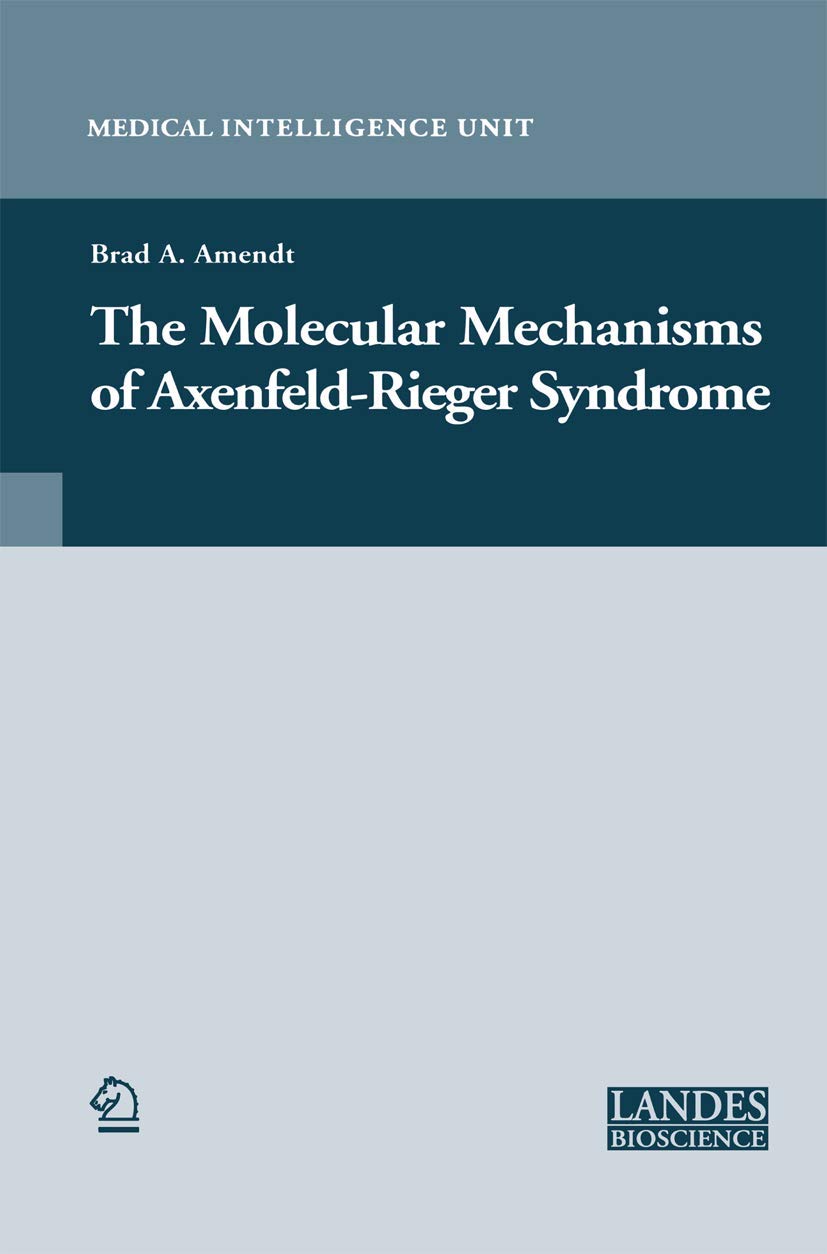MOLECULAR MECHANISMS OF AXENFELD-RIEGER SYNDROME (Medical Intelligence Unit)
MOLECULAR MECHANISMS OF AXENFELD-RIEGER SYNDROME (Medical Intelligence Unit) is backordered and will ship as soon as it is back in stock.
Couldn't load pickup availability
Genuine Products Guarantee
Genuine Products Guarantee
We guarantee 100% genuine products, and if proven otherwise, we will compensate you with 10 times the product's cost.
Delivery and Shipping
Delivery and Shipping
Products are generally ready for dispatch within 1 day and typically reach you in 3 to 5 days.
Author: Amendt, Brad A.
Brand: Springer
Edition: 2005 ed.
Binding: hardcover
Format: Illustrated
Number Of Pages: 106
Release Date: 13-07-2005
Part Number: 9780387262222
Details: We are excited to bring together recent research on the molecular biology of Axenfeld-Rieger syndrome (ARS) disorders. In the following chapters we will review and provide direct evidence for the molecular basis of this group of heterogeneous disorders, which include Rieger syndrome and Rieger anomaly. While ARS patients were initially diagnosed in the early 1930s the genetic basis for ARS was unknown until the recent identification of chromo- somal loci associated with this genetic disorder. In the mid-1990s Drs. Jeffrey C. Murray and Elena V. Semina identified PITX2 through positional cloning tech- niques as a gene associated with ARS. These researchers were able to iden- tify point mutations in PITX2 that were linked with ARS patients. ARS patients presented clinically with several developmental anomalies that fur- ther provided clues about the function of the PITX2 homeobox tran- scription factor. The phenotypic variability of ARS patients indicates that PITX2 can participate with many other faaors to control normal development processes. The hallmarks of ARS developmental anomalies are eye, tooth and umbilical defects. However, abnormal pituitary, heart, and craniofacial development are also detected. Thus, ARS patients provided the first link of PITX2 involvement in the development of these organs and structures. Some of these anomalies are recapitulated in epigenetic and genetic mouse, chick, zebrafish and frog studies which will be reviewed in the following chapters.
EAN: 9780387262222
Package Dimensions: 9.3 x 6.2 x 0.5 inches
Languages: english





